Jurnal
-
Jurnal Ilmiah Hukum DE'JURE: Kajian Ilmiah Hukum
Jurnal Ilmiah Hukum De’Jure: Kajian Ilmiah Hukum merupakan Jurnal Ilmu Hukum yang dipublikasikan oleh Lembaga Kajian Hukum Fakultas Hukum Universitas Singaperbangsa Karawang. Jurnal tersebut merupakan hasil penelitian serta kajian gagasan konseptual di bidang ilmu hukum terhadap isu-isu hukum, kosenseptual dalam tataran teori dan praktik, putusan pengadilan, analisis kebijakan pemerintah dan pemerintahan daerah serta lainnya.Jurnal Ilmiah Hukum De’Jure: Kajian Ilmiah Hukum merupakan hasil penelitian berupa tulisan baik dari kalangan civitas akademika Universitas Singaperbangsa Karawang pada umumnya maupun hasil sumbangsi Tenaga Pengajar di lingkungan Fakultas Hukum Universitas Singaperbangsa Karawang serta peran aktif dari penulis-penulis lain di luar Universitas Singaperbangsa Karawang. Jurnal tersebut ditujukan kepada seluruh mahasiswa/i, masyarakat, para pakar, akademisi, praktisi, penyelenggara negara, LSM serta pemerhati ilmu hukum.Jurnal Ilmiah Hukum De’Jure: Kajian Ilmiah Hukum diterbitkan dua kali setahun (Mei dan September), naskah yang sudah diterima dan siap dipublikasikan akan dipublikasikan secara online (early view) secara bertahap dan versi cetaknya akan diedarkan pada akhir periode penerbitan, yaitu Bulan Mei dan September yang telah diregistrasi oleh Lembaga Ilmu Pengetahuan Indonesia (LIPI) berdasarkan Surat Keputusan Nomor 0005.115/JL.3.2/SK.ISSN/2015.03.Copyright of JURNAL ILMIAH DE'JURE: KAJIAN ILMIAH HUKUM
(P): 2442-7578
(E): 2541-1594
-
Jurnal Agrimanex: Agribusiness, Rural Management, and Development Extension
About This Journal
Agrimanex Journal: Agribusiness, Rural Management, and Development Extension is a peer-reviewed journal published by Agribusiness Department, Faculty of Agriculture, University of Singaperbangsa Karawang collaborated with the Agribusiness Association of Indonesia (AAI). The collaboration MoU can be downloaded here.
The Agrimanex Journal was preliminarily published in September 2020. This journal focuses on the study as well as development of Agricultural Socioeconomic Sciences and Agribusiness. The agribusiness itself is an agricultural-based business and agricultural system whose organization and management are rationally designed to obtain maximum commercial added value by producing goods and services demanded by the market through the process of biological transformation of biota (plant, livestock, fish), farming process, post-harvest, cultivation and commerce. Furthermore, the rural management is the village's ability to manage human resources in terms of community and natural resources according to the characteristics of the village. The development counselling turns out as activity of process of social, economic and political transformation to empower and strengthen community capabilities through a teamwork learning process. Therefore, there can be expected that there are changes occurred of all stakeholders’ behavior (individuals, groups, institutions) involved in the development process in order to have a better, empowered, independent and dynamic life in terms of welfare and sustainability.
The Agrimanex Journal examines three scientific points in accordance with the development of science and technology in Indonesia.
This journal is published twice in a year, every March and September.
-
PharmaCine : Journal of Pharmacy, Medical and Health Science
PharmaCine: Jurnal Farmasi, Kedokteran, dan Ilmu Kesehatan adalah jurnal yang ditinjau oleh rekan sejawat (peer-reviewed) dan didedikasikan untuk publikasi ilmiah dalam bidang farmasi, kedokteran, dan ilmu kesehatan. PharmaCine diterbitkan dua kali setahun, pada bulan Maret dan September, oleh Program Studi S1 Farmasi, Fakultas Ilmu Kesehatan, Universitas Singaperbangsa Karawang, bekerja sama dengan Ikatan Apoteker Indonesia (IAI). Jurnal ini berfungsi sebagai forum bagi mahasiswa, apoteker, tenaga medis, dan profesional kesehatan lainnya untuk memperbarui pengetahuan dan mengakses literatur ilmiah. PharmaCine menerbitkan berbagai jenis artikel, termasuk meta-analisis, penelitian asli, tinjauan, dan laporan kasus. Setiap artikel yang masuk akan ditinjau oleh rekan sejawat sesuai dengan bidang ilmiahnya untuk memastikan kualitas dan ketepatan ilmiah. Ruang lingkup Jurnal PharmaCine mencakup berbagai topik di bidang farmasi, kedokteran, dan ilmu kesehatan, antara lain:
- Farmakologi
- Farmakoterapi
- Farmasi Klinis
- Teknologi Farmasi
- Farmasi Herbal
- Farmasi Sosial
- Manajemen Farmasi
- Biokimia Klinis
- Farmakogenetika
- Kimia Farmasi
- Biologi Farmasi
- Ilmu Kesehatan Masyarakat
-
BAROMETER
BAROMETER diterbitkan oleh Fakultas Teknik Universitas Singaperbangsa Karawang sejak 1998. Kemudian tidak ada penerbitan dan diterbitkan kembali pada Juli 2016 dengan Vol.01 No.01 . BAROMETER dicetak dalam bentuk hardcopy dengan ISSN. 1979-889X dan dalam bentuk softcopy dengan e-ISSN. 2549-9041. BAROMETER menerbitkan artikel ilmiah yang merupakan hasil-hasil penelitian, telaah ilmiah/kajian ilmiah/hasil pemikiran, dan analisis/pemecahan permasalahan di industri yang relevan dengan bidang ilmu teknik, dimana belum pernah dipublikasikan dimanapun. Artikel yang dikirimkan ke BAROMETER harus terbebas dari Plagiarism maupun Autoplagiarsm.
BAROMETER bertujuan untuk mendorong penelitian dalam studi keteknikan dan artikel-artikel yang dimuat berhubungan dengan bidang teknik. Topik yang berkaitan dengan bidang teknik diantaranya:
1. Kualitas Teknik & Manajemen; Supply Chain Management; Riset Operasi; Sistem pendukung Keputusan; Artificial Intelligence; Sistem Produksi; Manajemen Industry; Ergonomi.
2. Material Teknik; Konversi Energi, Perancangan Teknik dan Tribologi; Proses Produksi; CAD/CAM; CNC; Sistem Kontrol dan Robotika; Getaran Mekanik; Metrologi dan Kontrol Kualitas; dan Komputasi.
3. Transfer fenomena dan unit operasi Teknik Kimia, Teknik Reaksi Kimia, Kinetika kimia dan Katalisis, Perancangan, Pemodelan, dan Optimasi Proses, Teknologi energi dan konversi , Termodinamika, rekayasa sistem proses dan produk, teknologi partikulat dan emulsi, teknologi membran, pengembangan material, teknologi pangan dan bioproses, teknologi pengolahan limbah, teknologi minyak dan gas bumi.
4. Power System, Renewable energy, computer engineering, teknik biomedik, konversi energi, teknik tegangan tinggi, elektronika, kendali dan telekomunikasi
5.Pengolahan Air dan Air Limbah, Manajemen Lingkungan, Limbah padat dan B3, Polusi Udara dan Kebisingan, Ketahanan dan Mitigasi, Sanitasi dan Kesehatan Lingkungan
6. Topik lainnya yang berkaitan dengan bidang teknik -
JUDIKA (JURNAL PENDIDIKAN UNSIKA)
- Journal Title: JUDIKA (JURNAL PENDIDIKAN UNSIKA)
- Initials: JUDIKA
- Abbreviation: j.pendidik.unsika
- Frequency: 2 issues per year (Maret & November)
- DOI: Prefix 10.35706 by Crossref
- Online ISSN: 2528-6978
- Print ISSN: 2338-2996
- Editor in Chief: Dr. Mokhammad Ridwan Yudhanegara
- Email: journal.judika@unsika.ac.id
- Publisher: Fakultas Keguruan dan Ilmu Pendidikan Universitas Singaperbangsa Karawang
- Index by: Crossref, Sinta, Garuda, Google Scholar
JUDIKA (JURNAL PENDIDIKAN UNSIKA) merupakan jurnal ilmiah dengan konten jurnal meliputi tulisan hasil penelitian atau kajian teoretis pada bidang pendidikan secara umum. -
Jurnal Politikom Indonesiana
Jurnal Politikom Indonesiana
Jurnal Politikom Indonesiana (JPI) is a journal focusing on Government Science, Political Science and Communication Science. JPI focused on social phenomena at the national and international levels. JPI is committed to becoming a barometer of scientific journals among universities in Indonesia. In addition, JPI is committed to being an instrument for researchers and practitioners to contribute to development goals.
Jurnal Politikom Indonesiana (JPI) is published by the Faculty of Social and Political Sciences, Universitas Singaperbangsa Karawang, Indonesia. JPI was first published in June 2016. JPI is published twice a year in June and December. JPI is registered by the Indonesian Institute of Sciences (LIPI) based on Decree Number 0005.25282069/JI.3/SK.ISSN/2016.07, and has the E-ISSN number 2528-2069.
-
Jurnal Agrotek Indonesia
Indonesian Journal of Agrotech is a peer-reviewed, scientific journal published by Faculty of Agriculture, Universitas Singaperbangsa Karawang in collaboration with AJPI. The aims of this journal are to publish and disseminate research papers in the field of Agrotechnology i.e plant breeding, seed science, agronomy, horticulture, plant protection, soil science, plant biotechnology, and other related agricultural science.
The purpose of publishing Indonesian Journal of Agrotech is to provide scientific information about the development of science and technology in the field of Agriculture.ISSN (Cetak) : 2477-8494
ISSN (Online): 2580-2747
-
Jurnal Hukum Positum
Terakreditasi "S5" oleh Kementerian Riset Teknologi dan Pendidikan Tinggi Republik Indonesia Inisial Jurnal Hukum Positum DOI awalan 10.35706 Analisis Kutipan SCOPUS | Web of Science | Garuda | Google Scholar Layanan Indeks Dimensions | Google Scholar | Daftar Lengkap ISSN (daring) 2541-7193 ISSN (Cetak) 2541-7185 Penerbit Universitas Singaperbangsa Karawang Pemimpin redaksi Tri Setiady Redaktur Pelaksana Erdin Tahir Frekuensi 2 (dua) edisi per tahun (Juni dan Desember) Jurnal Hukum Positum diterbitkan oleh Program Studi Magister Ilmu Hukum Fakultas Hukum Universitas Singaperbangsa Karawang. Terbit secara berkala setiap bulan Juni dan Desember. Ruang lingkup Jurnal adalah hukum pidana, hukum perdata, hukum tata negara, hukum administrasi negara, hukum bisnis, hukum ketenagakerjaan, hukum internasional, hukum lingkungan, hukum adat, dsb. Artikel yang diterbitkan dalam bahasa Indonesia dan bahasa inggris.
Redaksi Jurnal Hukum Positum menerima naskah berupa hasil pengkajian konseptual dan hasil penelitian di bidang hukum. Naskah yang dimuat merupakan pendapat pribadi peneliti dan bukan merupakan pendapat redaksi dan/atau Fakultas Hukum Universitas Singaperbangsa Karawang. Artikel yang dipublikasikan di Jurnal Hukum Positum melalui proses penelaahan oleh mitra bestari (peer-review) yang bersifat double-blind. Oleh karena itu, diterima atau tidaknya artikel merupakan hak Dewan Redaksi berdasarkan rekomendasi dari mitra bestari.
Mohon untuk membaca dan memahami pedoman penulis dalam mempersiapkan naskah. Penulis yang mengirimkan naskah ke editor harus mematuhi pedoman dan template yang telah ditentukan. Jika naskah yang dikirim tidak sesuai dengan pedoman atau menggunakan format yang berbeda, maka naskah tersebut akan ditolak oleh tim editor sebelum ditinjau. Tim editorial hanya akan menerima naskah yang memenuhi persyaratan sesuai format yang ditentukan.
-
Hawari: Jurnal Pendidikan Agama dan Keagamaan Islam
Hawari: Jurnal Pendidikan Agama dan Keagamaan Islam merupakan jurnal yang dikelola oleh Prodi S1 Pendidikan Agama Islam, Universitas Singaperbangsa Karawang. Jurnal ini mempublikasikan artikel terkait Pendidikan Agama dan Keagamaan Islam.
Hawari: Jurnal Pendidikan Agama dan Keagamaan Islam terbit pertama kali pada Volume 1 No. 1 pada tahun 2020. Jurnal ini terbit secara berkala dua kali dalam satu volume dan terbit pada bulan Juni dan Desember. Jurnal ini memiliki ISSN sebagia berikut: 2723-6439 (Cetak) dan 2723-3936 (Online)
-
Jurnal Gizi dan Kuliner
Jurnal Gizi dan Kuliner (GIZIKU) dengan nomor ISSN 2722-1903 merupakan jurnal ilmiah nasional yang memuat artikel penelitian (research article) di bidang gizi masyarakat, Gizi klinik, gizi industry dan pengembamngan bidang kuliner. Jurnal Gizi dan Kuliner (GIZIKU) diterbitkan enam bulan sekali . Jurnal Gizi dan Kuliner(GIZIKU) diterbitkan oleh Prodi S1 Gizi, Universitas Singaperbangsa, Karawang . Oleh karena itu, GIZIKU juga terus mengundang para penulis untuk menyumbangkan artikel, terutama yang merupakan hasil-hasil penelitian kontemporer di bidang gizi dan kuliner
-
Go-Integratif : Jurnal Teknik Sistem dan Industri
- Journal Title: Go-Integratif : Jurnal Teknik Sistem dan Industri
- Initials: GIJTSI
- Abbreviation: GIJTSI
- Frequency: 2 issues per year (May & November)
- DOI: Prefix 10.35261 by Crossref
- Online ISSN: 2745-3510
- Editor in Chief: Dr. Sukanta, S.T., M.T.
- Publisher: Engineering Faculty at Universitas Singaperbangsa Karawang
- Indexed by: Garuda, Google Scholar, Dimensions
Go-Integratif : Jurnal Teknik Sistem dan Industri yang selanjutnya disingkat GIJTSI merupakan jurnal ilmiah yang diterbitkan oleh Fakultas Teknik Universitas Singaperbangsa Karawang, dan sebagai sarana publikasi hasil penelitian serta sharing perkembangan ilmu Teknik Sistem dan Industri. Jurnal ini memuat artikel hasil penelitian, penelitian terapan ataupun artikel telaah yang berkaitan dengan ergonomi, sistem manufaktur, manajemen industri, sistem rantai pasok, dan sistem informasi enterprise. Semua artikel yang masuk akan melalui "peer review process" setelah memenuhi persyaratan sesuai pedoman penulisan artikel. Penerbitan artikel oleh jurnal ini dilakukan setiap bulai Mei dan November. GIJTSI telah menerbitkan "issue" perdana, yaitu Vol. 1, No. 1, 2020 pada 30 November 2020.
-
Az-zakiy : Journal of Islamic Studies
Az-Zakiy: Journal of Islamic Studies, published by the Faculty of Islamic Studies, Singaperbangsa University Karawang, utilizes the Open Journal System (OJS from PKP) as a comprehensive management and publishing platform. This journal serves as an academic forum for the publication of scientific articles, with a focus on various aspects of Islamic studies. It aims to provide valuable references for readers to develop their academic and scientific insights.
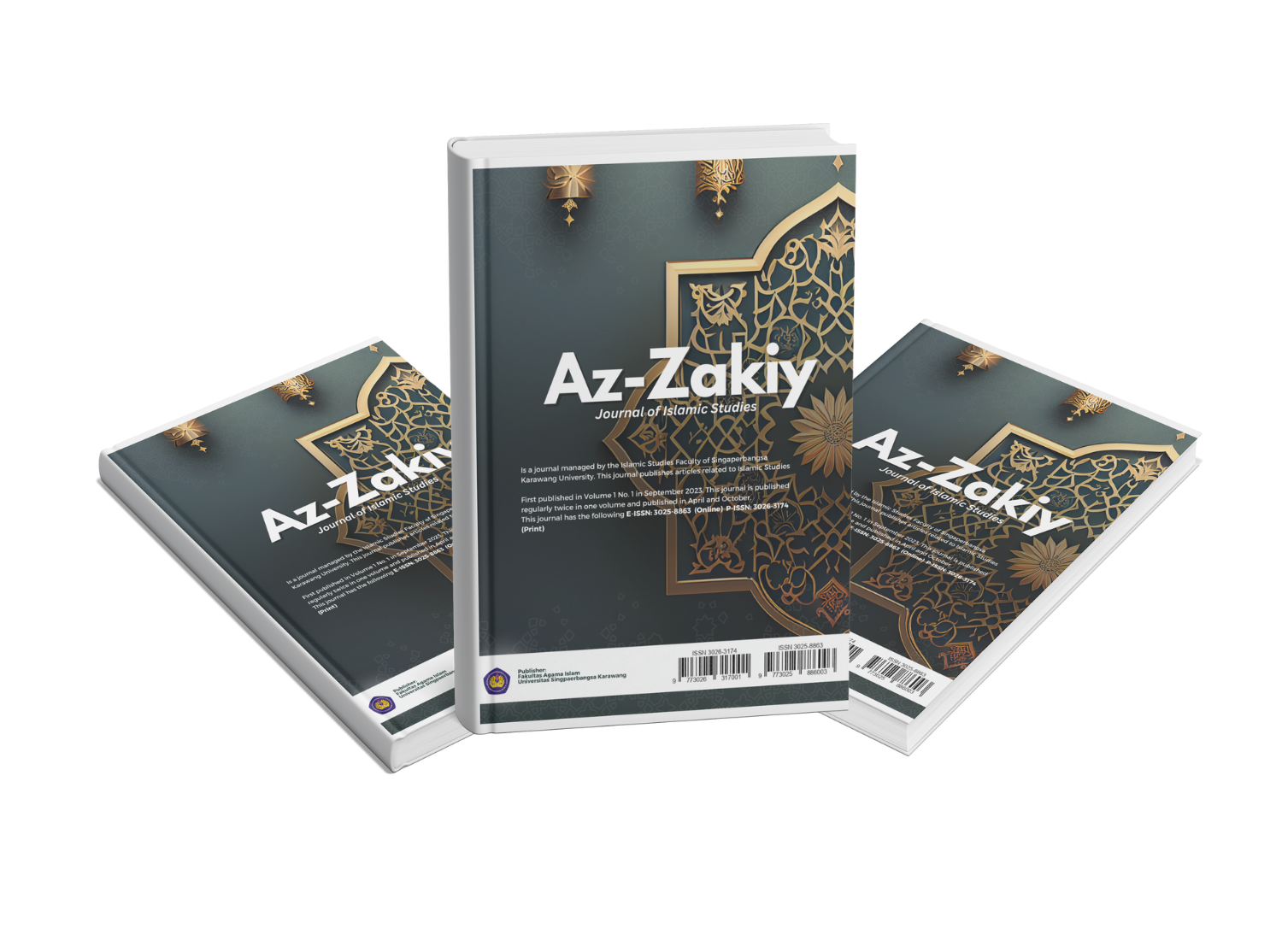
The journal is managed by the Faculty of Islamic Studies, Singaperbangsa University Karawang, and publishes articles that are related to the field of Islamic studies. First launched with Volume 1, Issue 1 in 2023, the journal is published twice a year, in April and October.
Az-Zakiy: Journal of Islamic Studies has the following E-ISSN 3025-8863 (Online) and P-ISSN 3026-3174 (Print). It is committed to advancing the academic discourse in the field of Islamic studies through high-quality scholarly contributions.
JOURNAL INFORMATION
Journal title : Az-Zakiy: Journal of Islamic Studies Initials : Az- Zakiy Frequency : 2 (Two) times a year (April and October) DOI : https://doi.org/10.35706/azzakiy Print ISSN : 3026-3174 Online ISSN : 3025-8863 Editor-in-chief : M. Makbul, M.Pd. Managing Editor : Firmansyah, S.Pd.I., M.Pd. Language : English or Indonesian Publisher : Fakultas Agama Islam Universitas Singperbangsa Karawang -
JOHAR (Journal of Hospital Administration Research)
Jurnal JOHAR (Journal of Hospital Administration Research) merupakan jurnal ilmiah nasional yang memuat artikel penelitian di bidang administrasi rumah sakit. Jurnal ini telah berdiri sejak 2024. Jurnal JOHAR diterbitkan enam bulan sekali (Bulan April dan November). Jurnal JOHAR dikelola oleh Program Studi S1 Administrasi Rumah Sakit, Fakultas Ilmu Kesehatan, Universitas Singaperbangsa Karawang.
Jurnal ini menggunakan mekanisme peer review yaitu setiap artikel yang dikirimkan harus ditinjau secara anonym oleh rekan ahli yang ditunjuk oleh editor. Artikel yang diterbitkan dalam jurnal ini berupa artikel asli (hasil penelitian).
-
Jurnal Budiman: Pembangunan dan Pengabdian Masyarakat Nusantara
Jurnal Budiman merupakan jurnal yang memuat hasil kegiatan pengabdian masyarakat yang diterbitkan oleh Fakultas Pertanian, Universitas Singaperbangsa Karawang.
Focus dan Ruang Lingkup artikel yang dimuat dalam Jurnal Budiman yaitu: Jurnal Pengabdian kepada Masyarakat adalah segala bentuk kegiatan di masyarakat berbasis multidisiplin penelitian dengan berbagai metodologi seperti Participatory Action Research (PAR), Asset Based Community Development (ABCD), Community Based Participant Research (CBPR), Community Based Research (CBR), Service Learning (SL), dan lain-lain. Hasil Pengabdian kepada Masyarakat meliputi:
- Pemberdayaan dan Inovasi keluarga, masyarakat, kelompok, dan atau komunitas tertentu
- Penerapan teknologi tepat guna
- Peningkatan Industri Kreatif-Inovatif masyarakat
- Pemanfaatan nilai kearifan local
- Pengembangan ekonomi, kewirausahaan, koperasi, dan UMKM
- Pengembangan IPTEK Informasi, Sosial-Budaya, Pertanian, Peternakan, Perikanan, Kehutanan, Kebumian, Kelautan dan Lingkungan
- Pembangunan Sumber Daya Manusia
- Pengembangan Pendidikan
- Peningkatan Kesehatan dan Gizi Masyarakat
- Sosiologi Kebencanaan & Manajemen Resiko
Periode penerbitan: April dan November
-
KREATIF: Jurnal Pengabdian Masyarakat Sains dan Teknologi
KREATIF: Jurnal Pengabdian Masyarakat Sains dan Teknologi, merupakan jurnal yang diterbitkan oleh Fakultas Teknik Universitas Singaperbangsa Karawang Tahun 2022. Jurnal Kreatif menerbitkan hasil kegiatan Pengabdian kepada Masyarakat yang dilakukan oleh Dosen maupun Mahasiswa. Jurnal Pengabdian ini, menerbitkan Issue dalam Bidang Sains dan Teknologi dengan frekuensi 1 tahun 2 kali pada Bulan April dan November.
-
Informatician Journal
Informatician Journal (IJ) merupakan Jurnal yang dikelola oleh Program Studi Teknik Informatika Fakultas Ilmu Komputer Universitas Singaperbangsa Karawang. IJ sendiri merupakan jurnal baru yang dibuat pada tahun 2021. IJ memuat artikel terkait hasil penelitian di bidang Teknologi Informasi dan Ilmu Komputer khususnya pada bidang keilmuan Data Mining, Machine Learning, Software engineering, dan Networking. Artikel IJ diterbitkan sebanyak 2 terbitan dalam satu tahun, sebanyak 6 artikel yaitu setiap bulan Juni dan Desember.
Meski terbilang jurnal baru IJ berkomitmen untuk segera menjadi salah satu jurnal terbaik baik tingkat nasional dengan terbitan - terbitan jurnal berbahasa Indonesia.
-
Jurnal Dorkes (Dedikasi Olahraga dan Kesehatan)
Jurnal Dorkes (Dedikasi Olahraga dan Kesehatan) merupakan jurnal Pengabdian Kepada Masyarakat (Fakultas Ilmu Kesehatan) Unsika (Universitas Singaperbangsa Karawang). Jurnal Dorkes (Dedikasi Olahraga dan Kesehatan) memiliki E-ISSN (3047-2377) dan P-ISSN (3047-0366). Fokus kajian dan Pengabdian pada jurnal ini di bidang-bidang Keolahragaan dan Kesehatan diantaranya: Ilmu Keolahragaan, Kebidanan, Farmasi, Gizi dan Kesehatan. Jurnal Ini Terbit 2 (dua) kali dalam 1 (satu) Tahun pada bulan Maret dan September. Jurnal ini merupakan jurnal terbuka (Open Access). Setiap naskah yang dikirimkan akan ditinjau dua peer-reviewer menggunakan metode single-blind review. Bagi penulis yang tertarik untuk mengirimkan naskah, silakan Mendaftar dan Login sendiri.
Editor-in-Chief
Deden Akbar Izzuddin, S.Pd., M.Pd., ELP
-
Journalism, Public Relation and Media Communication Studies Journal (JPRMEDCOM)
Journalism, Public Relation and Media Communication Studies Journal (JPRMEDCOM), one of the journals published Singaperbangsa University, was established in January 2019. Journalism, Public Relation and Media Communication Studies Journal (JPRMEDCOM), a doubl-blind peer-reviewed journal, explores critical and constructive inquiries into a wide range of fields of study Communication Science. Journalism, Public Relation and Media Communication Studies Journal (JPRMEDCOM ) published in July and December. All of the articles in this journal registered with unique DOI, provided by Crossef. We are proudly announcing, Journalism, Public Relation and Media Communication Studies Journal (JPRMEDCOM) also indexed by DOAJ (Directory of Open Access Journal). Journalism, Public Relation and Media Communication Studies Journal (JPRMEDCOM) also supervised and member of Asosiasi Penerbit Jurnal Ilmu Komunikasi Indonesia (APJIKI) - Association of Indonesia Communication Science' Journal Publisher.
-
The Double Entry Journal
The Double Entry Journal is a Journal of Accounting, Tax, Finance, and Management Science with peer-review published by Departement of Accounting, Faculty of Economics and Business, Universitas Singaperbangsa Karawang. All articles published in The Double Entry Journal are open access and available online, free without any subscription.
-
Journal for Management Student (JFMS)
Journal For Management Student (JFMS), adalah jurnal nasional peer review yang diterbitkan oleh fakultas ekonomi, program studi manajemen, Universitas Singaperbangsa Karawang, Jurnal ini dikhususkan untuk mahasiswa sarjana Program Studi Manajemen di Unsika dan universitas lain yang peduli dengan lingkup penelitian berikut ini:
- Pemasaran
- Sumber Daya Manusia (SDM)
- Operasi
- Ekonomi kreatif dan usaha kecil dan menengah (UKM)
- Keuangan
Penulis dapat berkontribusi secara intelektual dalam jurnal ini dengan menerbitkan artikel yang belum pernah dipublikasikan di jurnal lain. Artikel ini dapat ditulis dalam bahasa Inggris dan Indonesia.
-
Jurnal Olahraga Kebugaran dan Rehabilitasi (JOKER)
Rekan-rekan yang terhormat,
Jurnal Olahraga Kebugaran dan Rehabilitasi (JOKER) dengan nomor ISSN 2776-3927 (Cetak) dan 2798-0928 (Online), Identitas DOI https://doi.org/10.35706 merupakan jurnal pada Program Studi IKOR (Ilmu Keolahragaan) FIKES (Fakultas Ilmu Kesehatan) Unsika (Universitas Singaperbangsa Karawang). Fokus kajian dan Penelitian pada jurnal ini di bidang-bidang Ilmu keolahragaan diantaranya: Filsafat Olahraga, Sejarah Olahraga, Pedagogi Olahraga, Psikologi Olahraga, Sosiologi Olahraga, Biomekanika Olahraga dan Kedokteran Olahraga. Jurnal Ini Terbit 2 (dua) kali dalam 1 (satu) Tahun pada bulan April dan Oktober. Jurnal ini merupakan jurnal terbuka (Open Access). Setiap naskah yang dikirimkan akan ditinjau dua peer-reviewer menggunakan metode single-blind review. Bagi penulis yang tertarik untuk mengirimkan naskah, silakan Mendaftar sendiri. Pedoman penulis dapat dilihat dan diunduh di sini. Bagi yang sudah memiliki Nama Pengguna/Kata Sandi untuk Jurnal Joker langsung login. Jurnal Olahraga Kebugaran dan Rehabilitasi (JOKER) adalah Jurnal Terindex dengan Google Scholar, Garuda. Kami sangat senang bahwa artikel kami diperhitungkan untuk statistik kutipan dan H-Indeks, membangun prestasi ilmiah penulis, serta potensi institusional. Kami berterima kasih kepada editor, reviewer, penulis dan anggota Dewan Editorial lainnya atas dukungannya. Kami berharap Rekan-rekan semua akan terus mendukung Jurnal Joker Unsika dalam upaya untuk mendorong dan meningkatkan keandalan, kualitas, dan visibilitas.
Editor-in-Chief
Qorry Armen Gemael
-
JMEE: Journal of Management, Economic, and Entrepreneur
JMEE: Journal of Management, Economic, and Entrepreneur -
IJATB: International Journal of Accounting, Tax, and Business
IJATB: International Journal of Accounting, Tax, and Business -
De Juncto Delicti: Journal of Law
De Juncto Delicti: Journal of Law merupakan peer-reviewed jurnal dalam bidang Hukum Pidana yang Open Access (Akses Terbuka) dan diterbitkan oleh Fakultas Hukum Universitas Singaperbangsa Karawang dengan E-ISSN 2807-372X dan P-ISSN 2807-6095. Jurnal De Juncto Delicti terbit 2 (dua) kali dalam setahun yaitu bulan April dan Oktober dan pertama kali terbit pada tahun 2021. Ruang lingkup artikel dalam jurnal ini meliputi, Hukum Pidana Materil, pidana formil, sistem peradilan pidana, hukum pidana khusus (Tindak Pidana Korupsi, Tindak Pidana pencucian Uang, Tindak Pidana Narkotika, Kejahatan dunia maya, Tindak Pidana Ekonomi, Pidana Lingkungan, Pidana Pemilu), dan ilmu pendukung (Viktimologi, Kriminologi, dan Penologi) dan Politik Hukum. Naskah yang kami terima dan siap diterbitkan akan dipublikasikan secara online.
Journal of Criminal Law The scope of articles in Criminal Law includes Material Criminal Law, criminal justice system, special criminal law (Corruption Crime, Money Laundering, Narcotics Crime, Cybercrime, Economic Crime, Election Crime ), and supporting science (Victimology, Criminology, and Penology) and Political Law.
Masukan Naskah Make Submissions
-
Singaperbangsa Law Review (SILREV)
Singaperbangsa Law Review (SILREV) merupakan Jurnal Ilmu Hukum yang dipublikasikan oleh Fakultas Hukum Universitas Singaperbangsa Karawang. Jurnal tersebut merupakan hasil penelitian serta kajian gagasan konseptual di bidang ilmu hukum terhadap isu hukum yang kontemporer, gagasan konseptual dalam tataran teori dan praktik serta lainnya.
Singaperbangsa Law Review (SILREV) menjadi sarana publikasi melalui artikel hasil temuan penelitian yang bersifat orisinal, sebagai wadah untuk publikasi hasil penelitian dari luaran tugas akhir Mahasiswa/i Fakultas Hukum pada Universitas di Indonesia secara umum dan secara khusus pada Universitas Singaperbangsa Karawang yang merupakan kewajiban bagi mahasiswa untuk menyebarluaskan hasil karya ilmiahnya.
Singaperbangsa Law Review (SILREV) dinyatakan terbuka untuk umum, setiap orang dapat mengunduh dan menggunakan artikel ini tanpa dikenakan biaya. Jurnal ini merupakan jurnal yang mempublikasikan hasil riset atau opini yang berkaitan dengan ilmu hukum secara umum, baik terkait dengan dogmatika hukum, teori hukum atau filsafat hukum, yang disusun oleh Mahasiswa/i Fakultas Hukum, Dosen, Praktisi dan Pemerhati.
-
Jurnal SIGMAT Teknik Mesin UNSIKA
JURNAL SIGMAT TEKNIK MESIN UNIVERSITAS SINGAPERBANGSA KARAWANG
-
MURANGKALIH: Jurnal Pendidikan Anak Usia Dini
Murangkalih : Jurnal Pendidikan Anak Usia Dini diterbitkan oleh Program Studi Pendidikan Islam Anak Usia Dini Universitas Singaperbangsa Karawang. Jurnal ini menerbitkan artikel ilmiah di bidang Perkembangan Anak, Evaluasi Pembelajaran AUD, Profesionalisme Guru PAUD, Kurikulum PAUD, Literasi STEAM. Jurnal ini terbit dua kali dalam satu tahun yaitu pada bulan Maret dan September.
-
MUNTAZAM: JURNAL MANAJEMEN PENDIDIKAN ISLAM
Muntazam is an Educational Journal with an open access system or Open Journal System (OJS) published by the Islamic Education Management Study Program, Faculty of Islamic Religion, Singaperbangsa University, Karawang. The Muntazam journal is published twice a year, namely in June and December. The Muntazam journal focuses on the development of education management studies which are carried out through library research and field research. This is intended to enrich the science that is developing in the present.
Focus & Scope
This journal publishes articles of interest to education practitioners, teachers, education policy makers, expert researchers, policy analysts, supervisors, supervisors, educational evaluators, professional associations, bureaucrats and education/school management practitioners, madrasas and tertiary institutions. This journal includes scientific articles, research results, contemporary issues, innovative thinking, and reviews related to the scientific field of education management in all fields including:
- Leadership,
- Educational Planning
- Strategic Management
- Education policy
- Educational Oversight and Supervision
- Educational Quality Management
- Education Human Resource Management
- Management of Public Relations in Education Sector
- Educational Organizational Behavior and Culture
- Educational Financial Management
- Education Financing
- Decision-making
- Stress and Conflict Management in Educational Institutions
The Muntazam Journal is committed to developing collaborative research publications and scientific studies with universities, research institutes and scientific journals nationally, regionally and internationally.
ISSN Online : 2723-6765
ISSN Print : 2723-5882
-
STROOM: Journal of Signal Processing, Control, Electronics, Computer, Power, and Telecommunication Engineering
STROOM : Journal of Signal Processing, Control, Electronics, Computer, Power, and Telecommunication Engineering merupakan jurnal akses terbuka melalui proses peer-review yang diterbitkan oleh Program Studi Teknik Elektro, Fakultas Teknik, Universitas Singaperbangsa Karawang. STROOM diterbitkan dengan frekuensi dua kali dengan jumlah 1 volume. Artikel yang diterbitkan merupakan hasil penelitian dalam bidang-bidang Teknik Elektro antara lain Pemrosesan Sinyal, Kendali, Instrumentasi, Elektronika, Komputer, Tenaga Listrik, dan Telekomunikasi.
STROOM : Journal of Signal Processing, Control, Electronics, Computer, Power, and Telecommunication Engineering terbit pertama kali pada Volume 1 No. 1 pada tahun 2020. Jurnal ini terbit secara berkala dua kali dalam satu volume dan terbit pada bulan Juni dan Desember. Jurnal ini memiliki ISSN sebagai berikut: 2808-0165 (Online - Elektronik)
Seluruh artikel yang disubmit harus melalui proses pelaporan keaslian serta hasil penelitian yang belum atau sedang dalam proses publikasi. NAskah yang akan diterbitkan melalui proses peninjauan oleh sejawat. Naskah harus mengikuti gaya jurnal serta dapat ditinjau dan diedit. Sistem pengajuan dan penerbitan online menggunakan Open Journal Systems (OJS) STROOM. Makalah yang diterima akan tersedia secara online dan tidak akan dikenakan biaya publikasi.
-
JESIKA (Jurnal Elektronik Sistem Informasi Unsika)
JESIKA (Jurnal Elektronik Sistem Informasi Unsika)
-
Prosiding Sesiomadika
Seminar Nasional Matematika dan Pendidikan Matematika Universitas Singaperbangsa Karawang (SESIOMADIKA) merupakan event rutin tahunan pada Program Studi Pendidikan Matematika Universitas Singaperbangsa Karawang. Pada tahun 2022 ini merupakan periode ke-6 dalam penyelenggaraan event tersebut. Makalah-makalah yang diseminarkan pada event tersebut adalah makalah yang berasal dari bidang Pendidikan Matematika maupun Matematika murni dari kalangan akademisi maupun praktisi pendidikan matematika seluruh Indonesia.
Bidang Kajian
- Pendidikan Matematika,
- Analisis,
- Aljabar,
- Geometri,
- Statistika,
- Terapan,
- Komputer (Komputasi),
- Matematika Diskrit (Kombinatorika).
Sekretariat
Gedung FKIP, Lantai 1,
Ruang Program Studi Pendidikan Matematika,
Universitas Singaperbangsa Karawang,
Karawang
Contact Person. 081220279357
ISSN (online): 2722-6379
-
THE INDONESIAN JOURNAL OF POLITICS AND POLICY (IJPP)
The Indonesian Journal of Politics And Policy (IJPP), p-ISSN 2622-6251 ; e-ISSN 2655-3376 merupakan peer-reviewed jurnal yang dipublikasikan oleh Prodi Ilmu Pemerintahan, Fakultas Ilmu Sosial dan Ilmu Politik Universitas Singaperbangsa Karawang dan terbit pertama kali pada bulan Januari Tahun 2019. The Indonesian Journal of Politics And Policy (IJPP) diterbitkan secara berkala yaitu dua kali dalam setahun (bulan Juni dan Desember) sebagai wahana pendorong bagi perkembangan Ilmu Pemerintahan. Artikel yang diterbitkan pada jurnal ini merupakan hasil penelitian serta kajian kritis terhadap berbagai konsep baru, fenomena dan peristiwa dalam bidang pemerintahan, sosial dan politik dengan ruang lingkup sebagai berikut :
Politik, kebijakan publik, pelayanan publik, pemerintahan desa, tata kelola pemerintahan, e-government, otonomi daerah, pemberdayaan masyarakat, birokrasi, pengawasan pemerintahan, pertahanan keamanan dan keuangan daerah
Untuk setiap artikel yang masuk akan melalui proses review oleh peer reviewer yang memiliki kompetensi di bidangnya dengan proses review bersifat double blind. Keputusan diterima atau tidaknya artikel ilmiah dalam jurnal ini merupakan hak dewan redaksi berdasarkan pada rekomendasi dari peer reviewer.
Mohon membaca dan memahami pedoman bagi penulis (author guidlines) secara menyeluruh, penulis yang menyerahkan naskah ke editor IJPP harus sesuai dengan pedoman penulisan. Jika naskah yang dikirimkan tidak sesuai dengan pedoman atau menggunakan format yang berbeda maka akan ditolak oleh tim redaksi sebelum direview. Tim editorial hanya akan menerima naskah yang memenuhi persyaratan dan format yang telah ditentukan.
-
Wahana Karya Ilmiah Pendidikan
Wahana Karya Ilmiah Pendidikan merupakan jurnal yang diterbitkan oleh Program Studi S-2 Pendidikan Agama Islam Universitas Singaperbangsa Karawang
-
HSG (Health Science Growth) Journal
Health Science Growth(HSG) Journal merupakan jurnal yang mewadahi bidang kesehatan dengan no ISSN 2548-4877. jurnal ini bertujuan untuk meningkatkan serta mengembangkan keahlian juga pengetahuan peneliti dan penults khususnya di bidang kebidanan, farmasi, gizi, kedokteran dan kesehatan masyarakat
-
Value : Journal of Management and Business
Value: Journal of Management and Business
P-ISSN : 2541-397X (media cetak)
E-ISSN : 2550-116X (media online)
Setiap naskah yang dikirimkan ke jurnal ini harus mengikuti pedoman penulisan. Naskah akan discrening dan direview oleh mitra bestari (reviewer).
-
Majalah Ilmiah SOLUSI
Majalah Ilmiah Lembaga Penelitian dan Pengabdian kepada Masyarakat (LPPM)

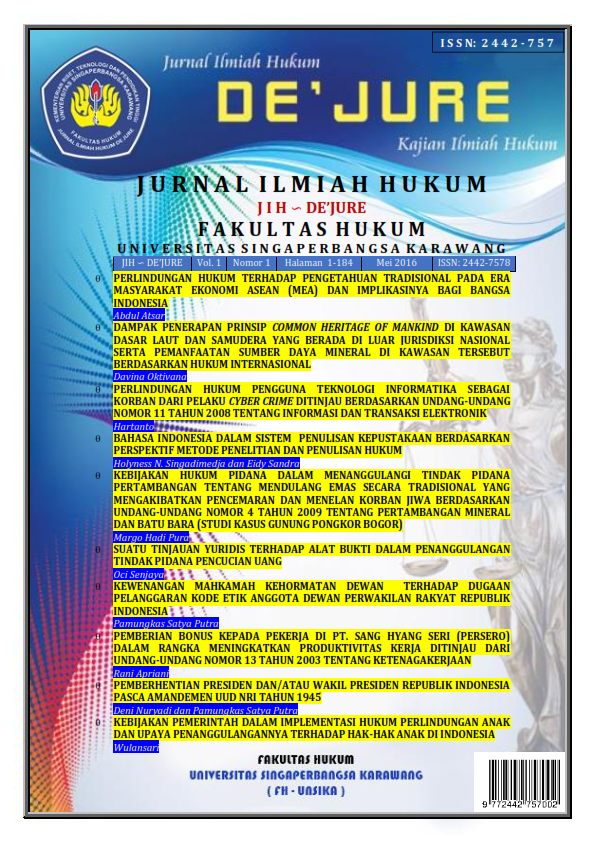
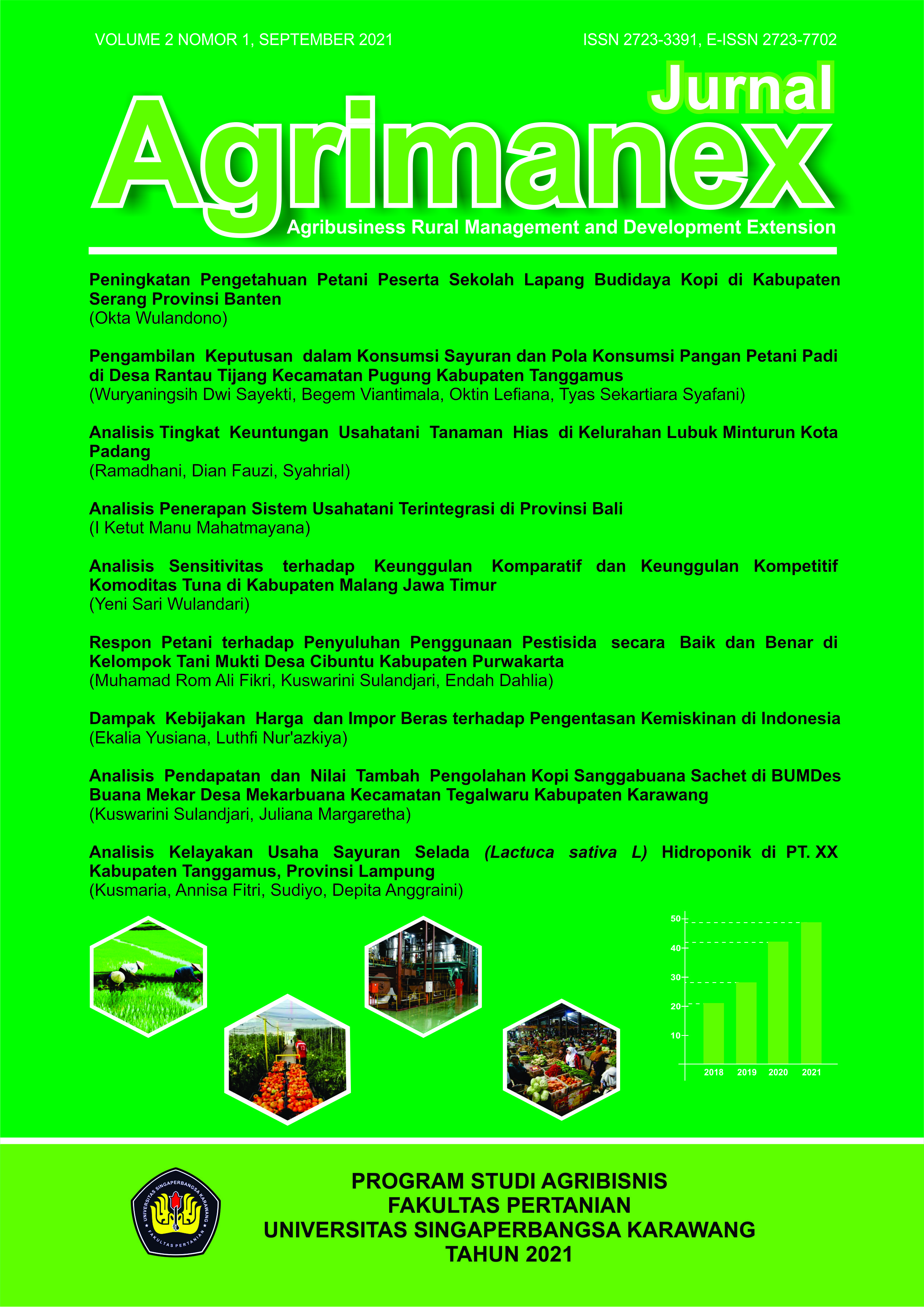
























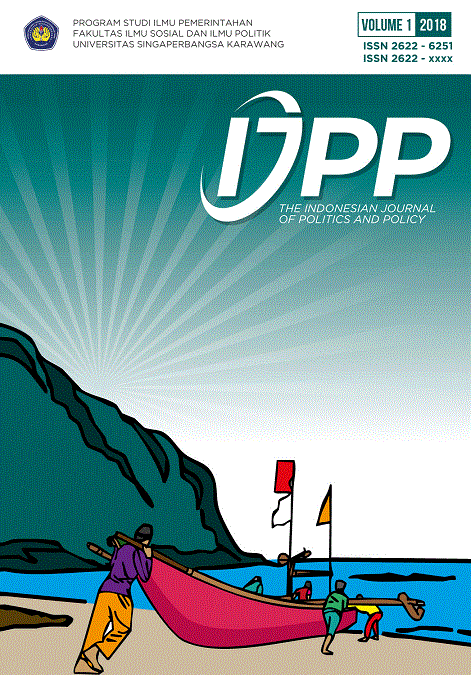


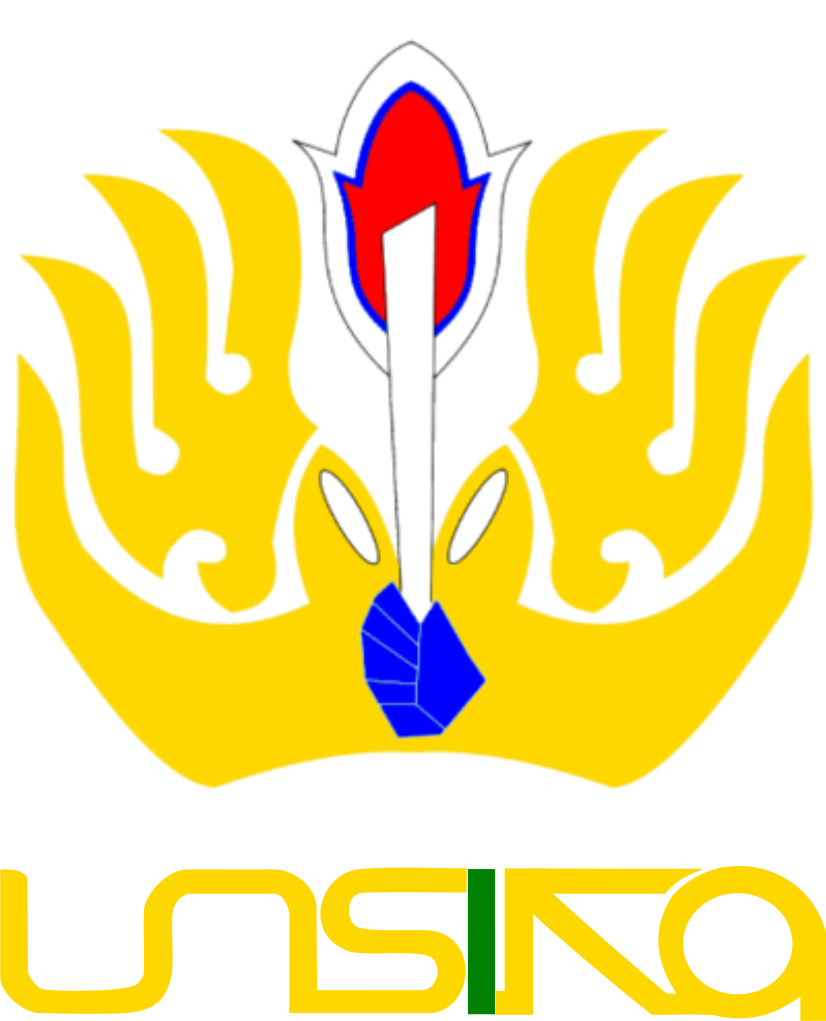 Lembaga Penelitian dan Pengabdian kepada Masyarakat (LPPM)
Lembaga Penelitian dan Pengabdian kepada Masyarakat (LPPM)